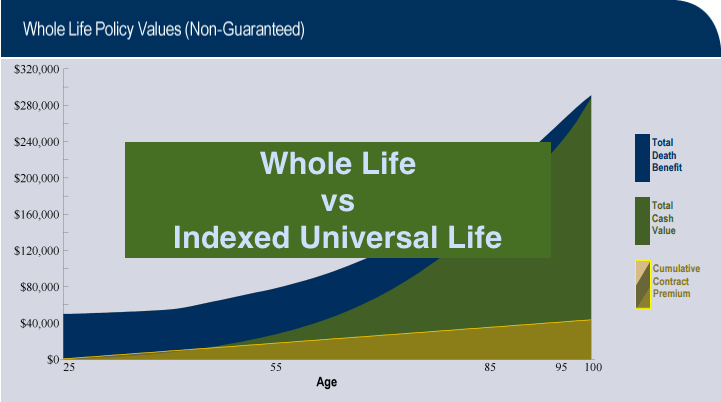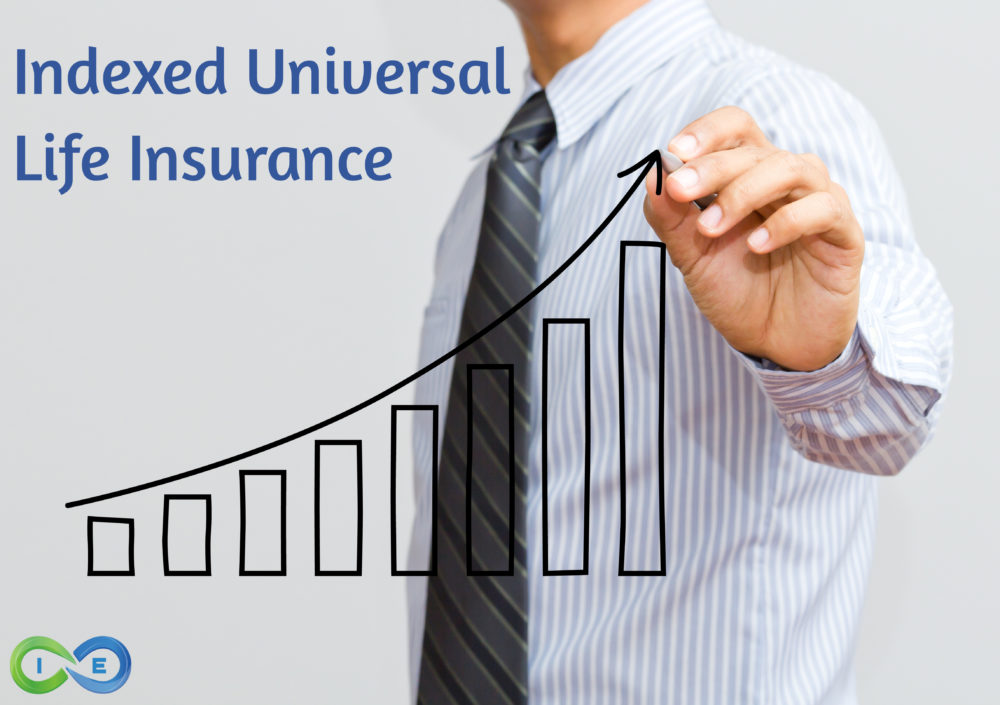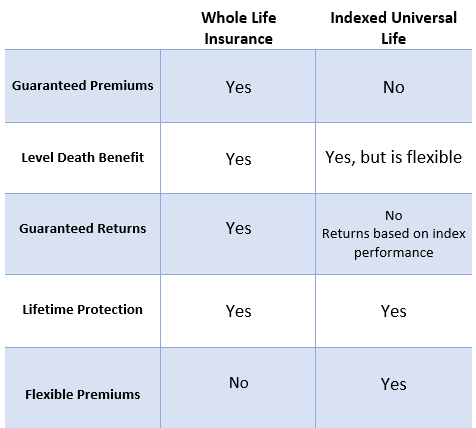All Categories
Featured
Table of Contents
For earning a restricted amount of the index's growth, the IUL will never ever receive much less than 0 percent passion. Even if the S&P 500 declines 20 percent from one year to the following, your IUL will not shed any kind of cash money worth as a result of the market's losses.

Picture the passion worsening on a product with that kind of power. Given all of this details, isn't it imaginable that indexed universal life is a product that would allow Americans to purchase term and spend the rest?
A true financial investment is a securities item that is subject to market losses. You are never ever based on market losses with IUL just due to the fact that you are never subject to market gains either. With IUL, you are not spent in the marketplace, but just gaining rate of interest based on the efficiency of the market.
Returns can grow as long as you continue to make settlements or preserve an equilibrium.
Best Guaranteed Universal Life Insurance Companies
Unlike global life insurance, indexed global life insurance's cash value earns interest based on the efficiency of indexed supply markets and bonds, such as S&P and Nasdaq., states an indexed global life plan is like an indexed annuity that feels like global life.

Universal life insurance policy was created in the 1980s when passion rates were high. Like other kinds of permanent life insurance coverage, this plan has a cash worth.
Indexed global life policies supply a minimum guaranteed rate of interest, also referred to as a passion attributing flooring, which lessens market losses. Claim your cash money value loses 8%. Several business supply a floor of 0%, indicating you will not shed 8% of your financial investment in this case (maximum funded insurance). Understand that your money value can decrease despite a flooring due to premiums and various other costs.
Accumulation At Interest Option
It's also best for those prepared to presume added danger for higher returns. A IUL is a long-term life insurance coverage policy that borrows from the homes of a global life insurance policy. Like global life, it enables versatility in your fatality advantage and premium payments. Unlike global life, your money worth expands based upon the performance of market indexes such as the S&P 500 or Nasdaq.
Her job has been published in AARP, CNN Emphasized, Forbes, Lot Of Money, PolicyGenius, and U.S. News & World Record. ExperienceAlani has examined life insurance coverage and family pet insurer and has composed countless explainers on traveling insurance policy, credit report, financial obligation, and home insurance coverage. She is passionate regarding debunking the complexities of insurance policy and various other individual finance subjects to make sure that readers have the details they need to make the best cash choices.

Paying only the Age 90 No-Lapse Premiums will ensure the death benefit to the insured's attained age 90 yet will not assure money worth accumulation. If your client discontinues paying the no-lapse warranty costs, the no-lapse attribute will end before the assured period. If this occurs, extra premiums in a quantity equivalent to the deficiency can be paid to bring the no-lapse attribute back effective.
I just recently had a life insurance coverage sales person show up in the comments string of a post I published years ago concerning not blending insurance and investing. He believed Indexed Universal Life Insurance Policy (IUL) was the most effective thing considering that sliced bread. On behalf of his setting, he uploaded a link to a write-up composed in 2012 by Insurance Coverage Agent Allen Koreis in 2012, entitled "16 Reasons Why Accountants Prefer Indexed Universal Life Insurance Coverage" [link no more readily available]
Best Iul Insurance
First a brief explanation of Indexed Universal Life Insurance Policy. The tourist attraction of IUL is obvious.

If the marketplace decreases, you get the assured return, usually something in between 0 and 3%. Certainly, given that it's an insurance plan, there are likewise the common costs of insurance coverage, commissions, and abandonment fees to pay. The information, and the reasons that returns are so dreadful when blending insurance policy and investing in this certain way, come down to generally 3 points: They just pay you for the return of the index, and not the rewards.
Best Variable Life Insurance
Your maximum return is topped. If you cap is 10%, and the return of the S&P 500 index fund is 30% (like last year), you get 10%, not 30%. Some plans just offer a specific portion of the modification in the index, say 80%. So if the Index Fund increases 12%, and 2% of that is rewards, the adjustment in the index is 10%.
Add all these results together, and you'll find that long-lasting returns on index universal life are rather darn near to those for whole life insurance coverage, favorable, yet low. Yes, these plans ensure that the money worth (not the money that mosts likely to the expenses of insurance policy, certainly) will not shed money, yet there is no assurance it will stay up to date with rising cost of living, much less grow at the price you need it to grow at in order to attend to your retirement.
Koreis's 16 reasons: An indexed global life plan account worth can never ever lose cash because of a down market. Indexed global life insurance policy assurances your account value, securing gains from each year, called a yearly reset. That's true, but only in small returns. Ask yourself what you require to pay in order to have a warranty of no small losses.
In investing, you earn money to take danger. If you do not wish to take much risk, do not anticipate high returns. IUL account worths expand tax-deferred like a qualified strategy (IRA and 401(k)); mutual funds do not unless they are held within a qualified plan. Just put, this indicates that your account worth take advantage of three-way compounding: You gain rate of interest on your principal, you gain interest on your passion and you earn rate of interest accurate you would otherwise have actually paid in taxes on the rate of interest.
Tax Free Iul
Certified plans are a better selection than non-qualified plans, they still have problems not offer with an IUL. Financial investment selections are normally restricted to shared funds where your account value goes through wild volatility from direct exposure to market risk. There is a large difference in between a tax-deferred retired life account and an IUL, however Mr.
You buy one with pre-tax bucks, conserving on this year's tax obligation bill at your marginal tax price (and will usually be able to withdraw your money at a reduced efficient price later on) while you buy the various other with after-tax dollars and will be compelled to pay passion to borrow your very own money if you don't desire to surrender the plan.
He throws in the timeless IUL salesman scare technique of "wild volatility." If you hate volatility, there are much better means to lower it than by acquiring an IUL, like diversification, bonds or low-beta stocks. There are no constraints on the quantity that may be added yearly to an IUL.

Why would the federal government put restrictions on how much you can put right into retired life accounts? Possibly, just possibly, it's due to the fact that they're such a wonderful bargain that the government does not desire you to save as well much on taxes.
Latest Posts
Iul Explained
Universal Life Insurance For Business Owners
Indexed Universal Life Insurance Quotes